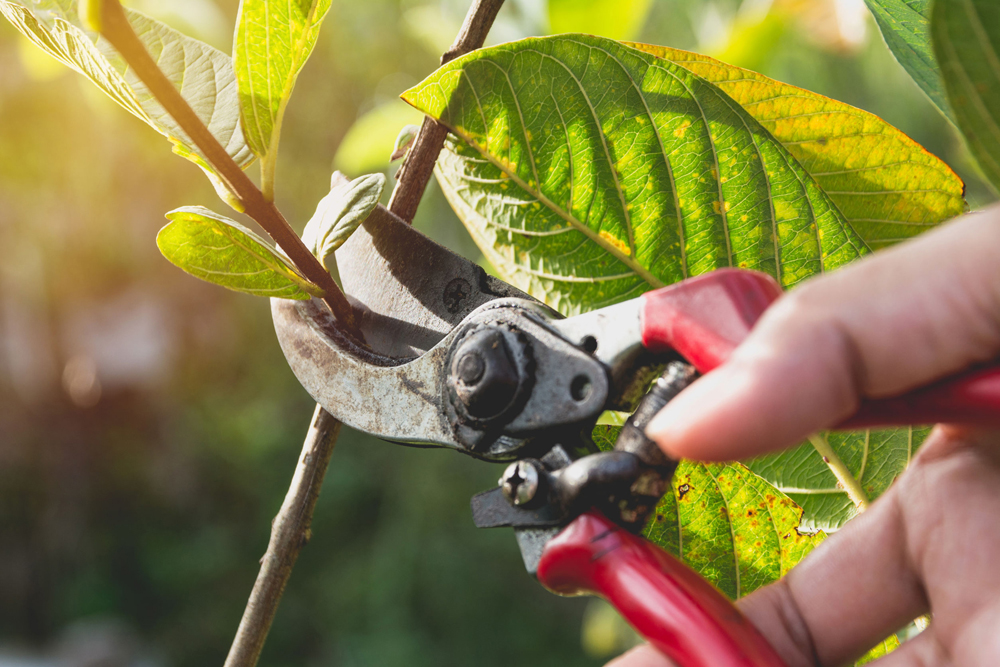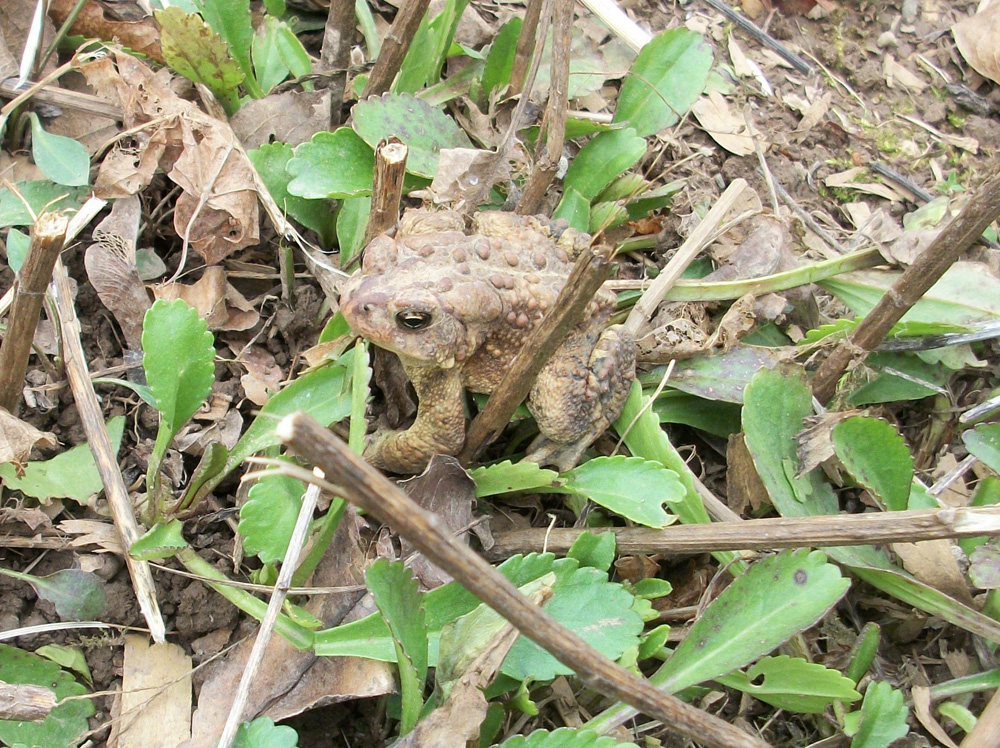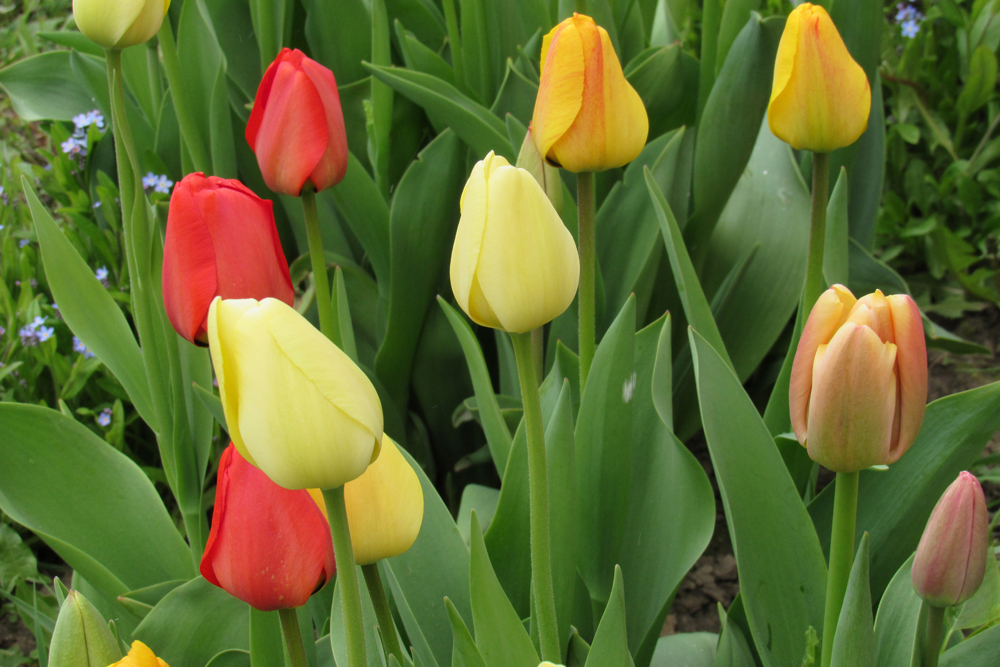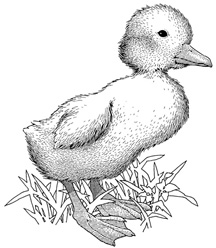Now’s a great time to do some pruning

As we all look for activities to do outside, right now is a great time to prune some plants, but the wrong time to prune others. Of course, there are proper ways to prune, with good reason. So let’s start with the basics.
Pruning for Plant Health:
Right now, it is easy to see all of the twigs and branches on your woody shrubs and trees. Pruning out any dead twigs and branches can and should be done now. Also, if you see any twigs or branches that are rubbing against another, one of these should be removed. Deciding where to make your cut is the first decision you need to make.
•Rule #1: Stand back and look at your tree or shrub and its shape to determine where you should begin. Step back often to review the form.
•Rule #2: Always make your cut at a node. A node is where a bud is attached to a twig (you would cut just above the bud at a slight angle), where a twig attaches to a branch and where a branch attaches to a larger branch or the main stem. In the latter two locations, you will see a small swelling at the point of attachment. This is called the branch collar. You want to make your cut just above the collar. In most cases, it is best to remove the entire twig (cut at the base) rather than making the cut halfway down.
•Rule #3: Use your hand pruners for any twigs or small branches (1/2” in diameter or less), use a pair of loppers for branches between 1/2 and 1.5” in diameter). Anything larger should be cut with a pruning saw.
•Rule #4: Make sure the blade on your pruners and loppers are sharp. Cornell Cooperative Extension of Monroe Country recommends using bypass pruners always, but anvil style pruners may be used on dead twigs and branches.
Pruning for Shaping:
•Rule #1: Stand back and look at your tree or shrub and its shape to determine where you should begin. Step back often to review the form.
•Rule #2: Understand your plant. Inside your shrub or tree is the plant’s DNA, which tells it how tall, how wide, and what sort of shape it will have at maturity. If you are trying to prune the plant into a size or shape that goes against this DNA, the plant will fight back aggressively. A Dwarf Burning Bush that wants to mature at 8’ tall and 6 to 8’ wide is going to resist your attempt to keep it 3’ tall and 4’ wide. If you have a plant that is or will be too large for the space where it is growing, perhaps the better choice would be to move that plant to another location and plant a new one that won’t outgrow the site.
•Rule #3: Prune to allow light and air to get into the middle of the plant. Removing some of the twigs and branches from the center can achieve this while not interfering with the plant’s natural shape. Once that has been achieved, you can then decide if more needs to be removed to maintain the shape.
•Rule #4: Shearing plants encourages a rapid response from the plant to replace the lost food-producing leaves. While some plants are able to withstand regular shearing (Yews and Boxwood come to mind), shearing generally results in the development of foliage clustered at the tips of the plants and die back. Refer to the instructions in the section above, and you will be richly rewarded with strong, healthy plants that have foliage from top to bottom.
Pruning for Increased Flowering/Fruit:
Timing is everything. Plants that flower in the spring should be pruned shortly after they flower. So your Lilac should not be pruned until the flowers are spent and for about a month or so after. Plants that flower in the summer and later can be pruned now as they flower on new growth. This would include your Roses, Butterfly Bushes, and Potentillas.
Renewal Pruning:
If you have an old, over-grown plant such as a Lilac, Rose-of-Sharon, or Viburnum, you can regenerate a new plant over a period of three years. Each year cut one-third of the plant almost to the ground. By the end of the third year, you will have a new, healthy plant that you can enjoy.
Cornell Cooperative Extension of Monroe County has the Gardener’s Helpline, staffed by Master Gardeners. They are available to answer any questions you might have. The Helpline can be reached at 753-2555 or monroemg@cornell.edu. CCE-Monroe also has a Diagnostic Clinic for processing soil samples and for pest diagnosis – insects, diseases, and weeds. The Clinic can be reached at 753-2553 or eab11@cornell.edu. Visit monroe.cce.cornell.edu for more information.
Provided information





